Potřebujeme váš souhlas k využití jednotlivých dat, aby se vám mimo jiné mohly ukazovat informace týkající se vašich zájmů. Souhlas udělíte kliknutím na tlačítko „OK“.
ASTM B871-01(2013)
Standard Test Method for Tear Testing of Aluminum Alloy Products (Withdrawn 2017)
Automaticky přeložený název:
Standardní zkušební metoda pro Tear testování výrobků z hliníkové slitiny
NORMA vydána dne 1.5.2013
Informace o normě:
Označení normy: ASTM B871-01(2013)
Poznámka: NEPLATNÁ
Datum vydání normy: 1.5.2013
Kód zboží: NS-8558
Počet stran: 7
Přibližná hmotnost: 21 g (0.05 liber)
Země: Americká technická norma
Kategorie: Technické normy ASTM
Kategorie - podobné normy:
Anotace textu normy ASTM B871-01(2013) :
Keywords:
aluminum alloys, product form, tear strength, tear strength/yield strength ratio, tear test, unit propagation energy, ICS Number Code 77.040.10 (Mechanical testing of metals), 77.150.10 (Aluminium products)
Doplňující informace
| Significance and Use | ||||||||||||||
|
5.1 The significance of the tear test is similar to that of the notch-tensile test, and its primary usefulness is as an indicator of toughness or as a ranking test as described in Test Method E338 and Practice B646. 5.1.1 This test method provides a comparative measure of resistance of aluminum alloys and products to unstable fracture originating from the presence of crack-like stress concentrators. This test method is not intended to provide an absolute measure of resistance to crack propagation that might be used in the design of a structure. 5.2 Values of the energies required to initiate and propagate cracks in tear specimens are determined by measuring or integrating the appropriate areas under the test curve developed during the test. 5.3 The unit propagation energy (UPE) is the primary result of the tear test. This value provides a measure of the combination of strength and ductility that permits a material to resist crack growth under either elastic or plastic stresses. The UPE value normally will exhibit greater scatter than conventional tensile or yield strength values. In order to establish a reasonable estimate of average properties, it is recommended that replicate specimens be tested for each metal condition being evaluated. The UPE value has significance as a relative index of fracture toughness. 5.4 The ratio of the tear strength to the tensile yield strength is a measure of notch toughness comparable to the notch-yield ratio from notch-tensile tests carried out in accordance with Test Method E338. It is of value in relative ranking of materials with regard to their toughness.5.5 The numerical results of the test are dependent upon the specimen size and geometry, although specimen thicknesses over the range of 0.063 in. (1.6 mm) to 0.100 in. (2.5 mm) have not shown a significant effect on tear strength (TS) and unit propagation energy (UPE).6 These values may exhibit a dependency to thickness when the specimen thickness is outside of this stated range and care shall be taken when using this data. 5.6 The tear test can serve the following purposes: 5.6.1 In the research and development of materials, to study the effects of variables of composition, processing, heat treatment, etc. 5.6.2 In service evaluation, to compare the relative crack propagation resistance of a number of aluminum alloys or products that are otherwise equally suitable for an application. 5.6.3 For specifications of material acceptance and manufacturing quality control when there is a sound basis for establishing a minimum acceptable tear test property, that is, UPE. 5.7 The reliability of the tear test has been well established by developing reasonably good correlations1.1 This test method covers the static tear test of aluminum alloy products using specimens that are 0.040 in. (1 mm) to 0.250 in. (6.35 mm) thick. 1.2 This test method is applicable to aluminum alloy products having a minimum thickness of 0.040 in. (1 mm). 1.3 This test method provides a measure of both notch toughness and resistance to crack propagation with the primary use as a screening or merit rank test. 1.4 The reliability of the tear test has been established in various research programs by reasonably good correlations between data from the tear tests and fracture toughness tests.1.5 The values stated in inch-pound units are to be regarded as the standard. The values given in parentheses are for information only. 1.6 This standard does not purport to address all of the safety concerns, if any, associated with its use. It is the responsibility of the user of this standard to establish appropriate safety and health practices and determine the applicability of regulatory limitations prior to use. |
||||||||||||||
| 2. Referenced Documents | ||||||||||||||
|
Podobné normy:
Historická
1.11.2009
Historická
1.8.2012
Historická
1.9.2011
Historická
1.7.2008
Historická
1.9.2010
Historická
1.3.2011
Odebírejte informace o nově vydaných normách ZDARMA:
Chcete pravidelně odebírat informace o nově vycházejících normách z celého světa a to zcela zdarma?
Přihlašte se k odběru. Vše je velice jednoduché a absolutně ZDARMA.
Na výběr máte vydavatele z celého světa.


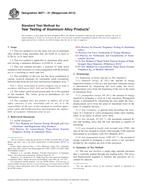
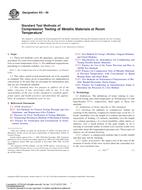 ASTM E9-09
ASTM E9-09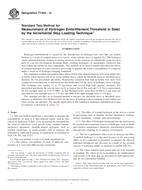 ASTM F1624-12
ASTM F1624-12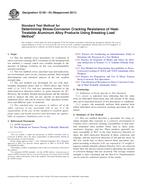 ASTM G139-05(2011)..
ASTM G139-05(2011)..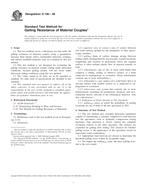 ASTM G196-08
ASTM G196-08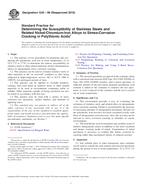 ASTM G35-98(2010)..
ASTM G35-98(2010)..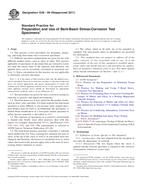 ASTM G39-99(2011)..
ASTM G39-99(2011)..
 Cookies
Cookies
